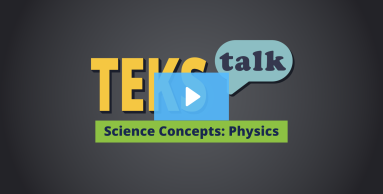
Knowledge and Skills Statement
Scientific and engineering practices. The student, for at least 40% of instructional time, asks questions, identifies problems, and plans and safely conducts classroom, laboratory, and field investigations to answer questions, explain phenomena, or design solutions using appropriate tools and models.
Supporting Information
Research
Jain, Jasmine, and Johan Luaran. "Conceptualisation of Scientific Theory-Law Relationship among Pre-service Teachers with Different Academic Abilities in Science." Asian Journal of University Education 16, no. 3 (2020): 208-219. http://doi.org/10.24191/ajue.v16i3.10275
Summary: This study focused on the understanding of the nature of science, specifically the relationship between scientific theories and laws, among first-year pre-service teachers. The findings suggest that the participants still conceptualize science knowledge as an objective epistemology, with no differences among participants of different academic science abilities.
